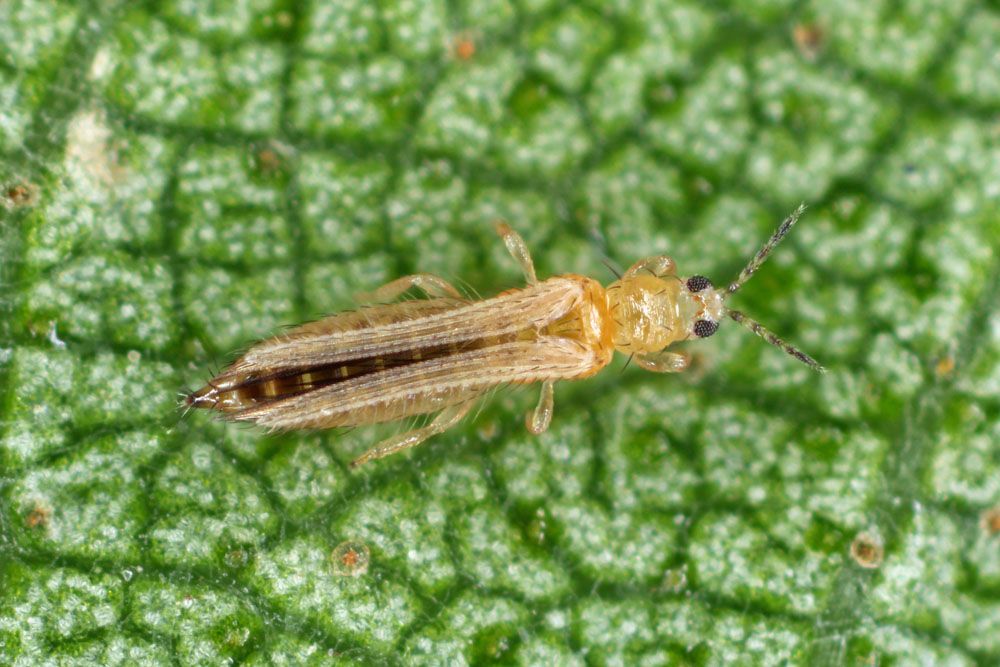
Onion Thrips – Thrips tabaci
Onion Thrips (Thrips tabaci)
Common Name: Onion Thrips
Latin Name: Thrips tabaci
Appearance:
- Adult onion thrips females are around 1.1 to 1.2 mm long, yellow, and have brownish spots on the thorax and the middle region of the abdomen. Antennae are gray, with the first segment being lighter than the others. Males are uncommon.
- The eggs are little, measuring around 0.2 mm in length, kidney-shaped, and white. They are stored in plant tissues.
- The first instar larva is whitish and measures roughly 0.35 to 0.38 mm in length. The second instar larva is yellowish and is around 0.7 to 0.9 mm in length.
- The pupa and prepupa are identical in color and form to the second instar larvae, except for possessing little wing pads.
Host plant:
Onion thrips are voracious eaters. Many plants have them in their leaves, stems, and flowers. It favors onions, although it also eats a variety of field crops, vegetables, flowers, and bedding plants. It has the potential to destroy chrysanthemums and carnations severely.
Territory:
Onion thrips have been found in almost every country in the world.
Damages caused by Onion Thrips:
Thrips are particularly destructive during the early bulbing stage of onion production. They eat under the leaf folds and in the sheltered inner leaves near the bulb, although when numbers are large, they may also be observed feeding on open leaf surfaces. Their eating may cause leaf scarring, which is most severe on green onions. Scarring may diminish effective photosynthetic area and provide an access site for foliar pathogens. Adults and nymphs both harm. When the foliage is badly destroyed, the whole area appears silvery.
Life history and habits:
Onion thrips overwinter in the legume (alfalfa) and grain (wheat) fields, weedy regions, and onion bulbs that have not been removed from onion fields. Females can reproduce without mating and deposit eggs on the undersides of leaves. After five to ten days, the eggs hatch. Thrips nymphs graze on plants in their first two stages. Two more non-feeding nymph stages reside in or on the soil surface. After 15 to 30 days, nymphs grow into adults, and adults return to plants to eat. Thrips may have five to eight generations each year, and outbreaks are most common during hot, dry spells in the summer.
